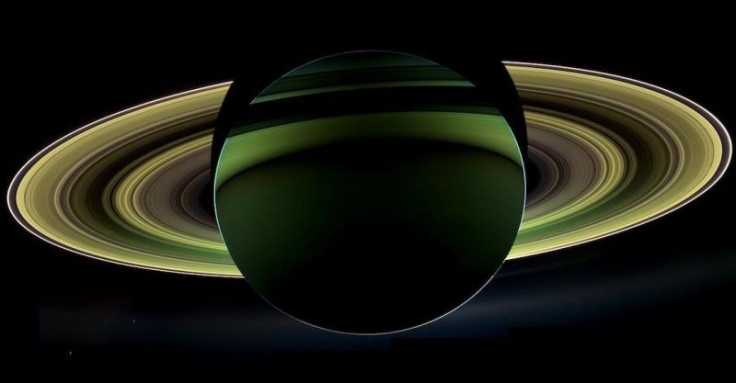WATCH: Cassini Sends Stunning View Of Saturn’s Rings From Its Death Lap

NASA has released a never-before-seen video of Saturn’s rings captured by the Cassini spacecraft from between the planet and the rings. The video is a spectacular reminder of the work the spacecraft has done over its almost-20-year journey around Saturn and its many moons.
Watch the video released by NASA here:
The movie titled ‘Inside-out’ is a series of 21 photos taken by the satellite in a span of just four minutes on August 20. These photos strung together give us a stunning new view of Saturn’s rings from in-between the planet and the rings themselves -- a place where no spacecraft has gone before.
The 'Grand Finale' is the name given to the final 22 orbits that Cassini will take on its way to its final fiery death. These orbits will gradually move closer to the atmosphere of Saturn until the explorer burns up on September 15. The incredible images are rather befitting of the final culmination of the long journey one of the our furthest eyes in the sky has been giving us for many years now.
The brave explorer will continue to send back visuals of the planet so liked that God put a ring on it. Cassini will angle the on-board transmitter toward earth even as it will hurtle toward the planet it has observed for 20 years, sending out invaluable data until it vaporizes.
Cassini is fast running out of fuel but the images sent back during the grand finale is just a pleasant reminder of the spectacular view it has given us over the years. Over the course of its orbit, Cassini has documented and provided unique data that has furthered our knowledge of our neighbors in the solar system. According to NASA, scientists got the first-ever view of a 2-billion-square-mile storm on Saturn’s surface, the largest recorded in our galaxy, in the year 2010.
The extensive data and brilliant images provided by Cassini have enabled the publication of more than 3,000 scientific reports. According to NASA, Cassini also helped explain Saturn’s “spokes,” first spotted during the Voyager flybys of the early 1980s. Cassini scientists figured out that the spokes are made of tiny ice particles that are lifted above the surface of the rings by an electrostatic charge, the way a statically-charged balloon held over a person’s head will lift hairs.
This long-lived robotic observing platform, bristling with science instruments, provided an unparalleled glimpse into what happens as weather and climate conditions on the planet and Titan, the largest moon orbiting Saturn, respond to the seasons — sometimes rather abruptly. Among the most amazing changes Cassini captured, the eruption of a once-every-30-year storm (one of the most fierce ever seen in the solar system) and methane rainstorms on Titan count as some of its finest, said NASA.
Cassini, over time, has revealed to us the true splendor of the most photogenic planet in our solar system. Cassini has shown us Saturn’s icy ringscapes that have fascinated us for decades with the sheer size of the components balanced delicately by gravity, forming one of the most recognizable features of the planetary system we live in. This subtle beauty of gravity has now been immortalized in the images this tiny starman has sent back.
© Copyright IBTimes 2024. All rights reserved.





















